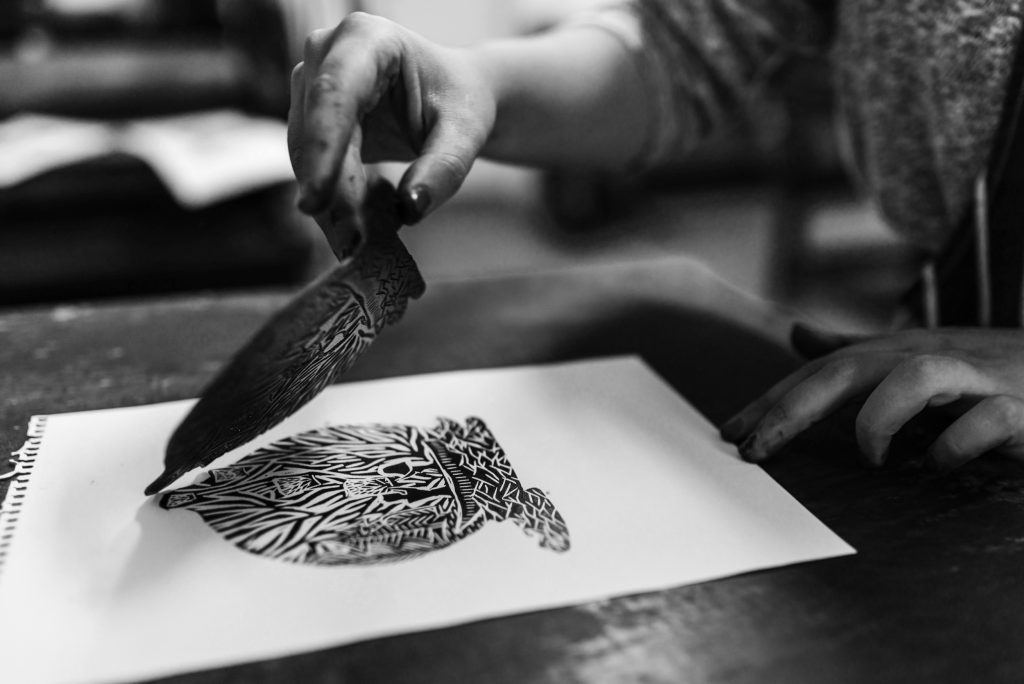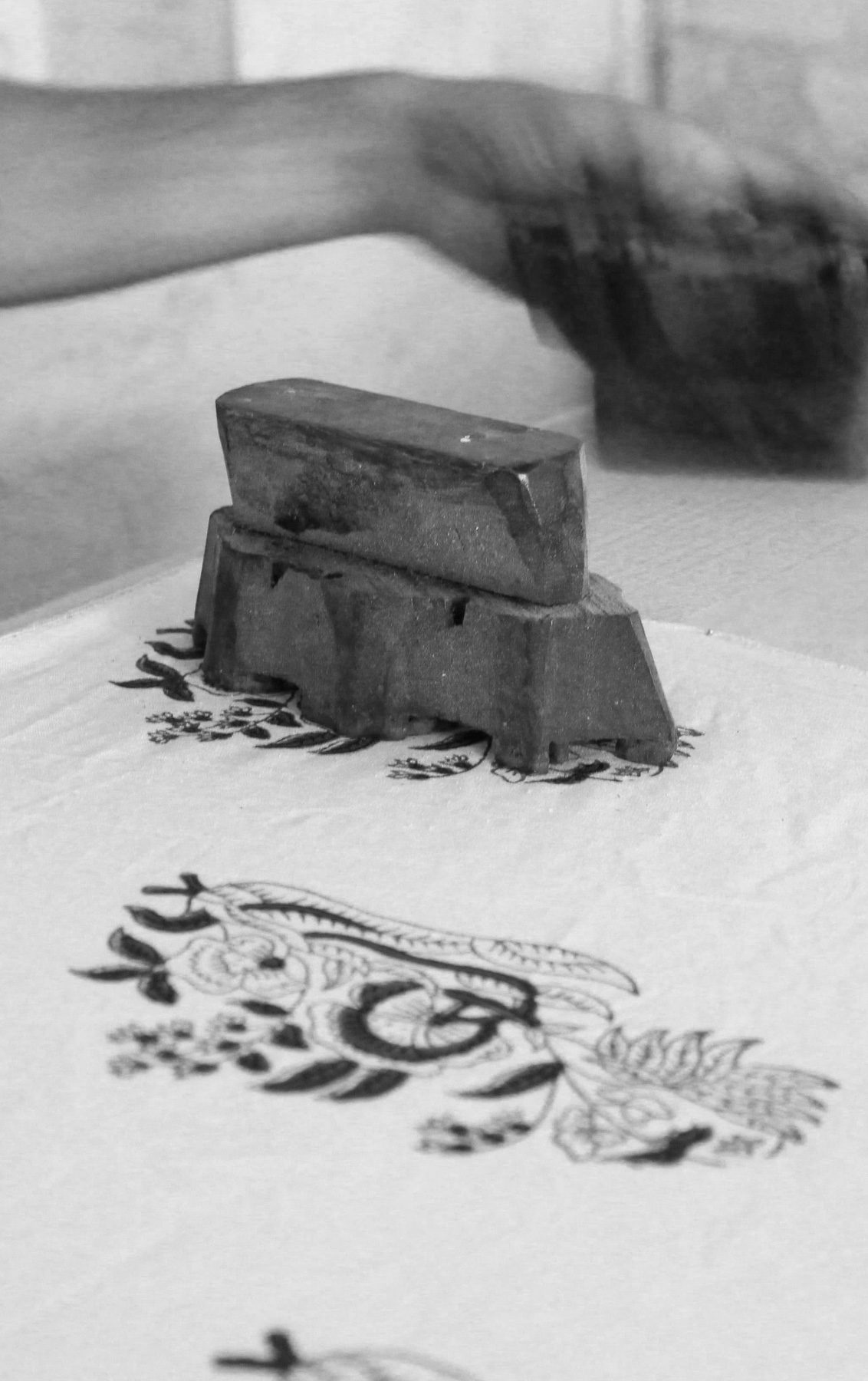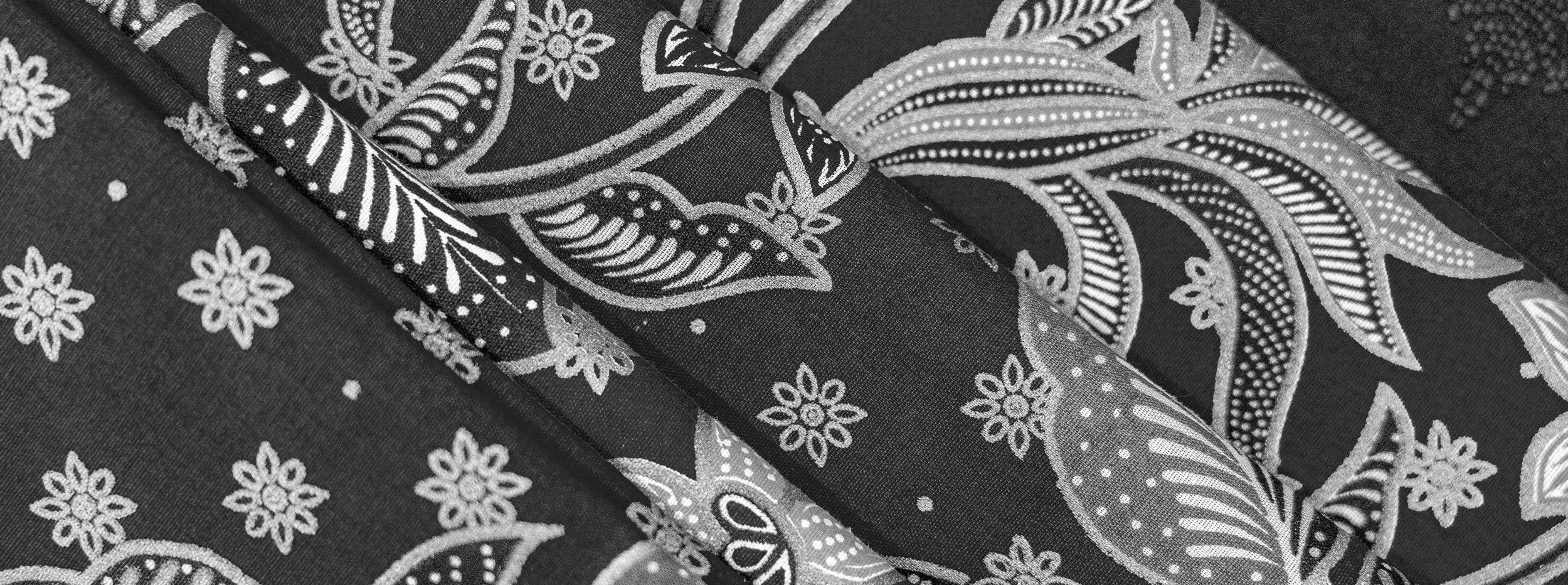The art of block printing has been an integral part of Indian culture for centuries. It is believed to have originated in the 12th century in Gujarat, India, and has since spread to other parts of the country. Today, block printing is widely practiced in India and is considered one of the most important art forms in the country.
Block printing requires precision. First, the design is drawn onto paper or cloth, then transferred onto a wooden block. Next, the artist carves the block, cutting the design into wood. Finally, they raise the print areas, leaving an indentation.
A carved block is dipped into the dye or ink and stamped onto the fabric or paper. The process is repeated several times, with each colour applied using a separate block. The result is a beautiful, intricate design unique to each piece of cloth or paper.
One of the unique features of block printing is the use of natural dyes. Traditional block printers use natural dyes from plants, fruits, and vegetables. Using natural dyes in the printing process gives the prints a unique and organic look and is environmentally friendly.
Block printing is an art form and an essential part of Indian culture. It creates traditional clothing, including sarees, kurtas, dupattas, and household items such as tablecloths, bedspreads, and curtains. People also use block printing to make decorative items such as wall hangings, cushion covers, and bags.



One of India’s most famous types of block printing is the Jaipur block print. Jaipur, the capital of Rajasthan, is known for its vibrant colours and intricate designs. Artisans create Jaipur block prints using geometric patterns and floral motifs with natural dyes.
Another famous type of block printing in India is the Kalamkari print. Kalamkari prints originated in Andhra Pradesh and are known for their intricate designs and use of natural dyes. Kalamkari prints are often made with scenes from Hindu mythology and are used to create traditional clothing such as sarees and kurtas.
The art of block printing has had a significant impact on Indian culture. It has not only provided a means of creating beautiful and unique textiles and paper and employment opportunities for many people, particularly women. In addition, many rural communities in India depend on block printing for their livelihoods, with entire families working together to create intricate designs.


Block printing has also been influential in preserving Indian culture and traditions. Many traditional designs and motifs have been passed down from generation to generation, and block printing has helped to keep these designs alive. In addition, many designers and artists use block prints to promote Indian culture worldwide through the art form.
Recently, there has been a renewed interest in block printing in India and worldwide. As a result, many designers and artists incorporate block prints into their work, creating modern and innovative designs that still honour traditional art forms.
It is impossible to overstate the significance of block printing in Indian culture. It is a unique and intricate art passed down from generation to generation and has played an essential role in India’s cultural and economic development.
Block printing has also created awareness about social and environmental issues. For example, the Bagh print, a traditional block print from Madhya Pradesh, India, has been used to create awareness about wildlife conservation. Natural dyes are used to create these patterns.
Furthermore, block printing has empowered women and promoted gender equality in India. Many women in rural communities have taken up block printing as a livelihood, giving them financial independence and helping to improve their socio-economic status.
Furthermore, people have used block printing to promote intercultural understanding. Many Indian designers and artists have collaborated with international artists to create unique and innovative designs that fuse traditional Indian motifs with modern techniques. The use of block printing has helped to promote Indian culture around the world and build bridges between different cultures.
The art of block printing is an integral part of Indian culture, heritage and economic development. It is an intricate and unique art form passed down from generation to generation. In addition, block printing has created awareness about social and environmental issues, promoted gender equality and empowered women, and promoted intercultural understanding and peace. As such, it is a symbol of India’s rich cultural heritage and a testament to the creativity, skill, and innovation of Indian artists and designers.